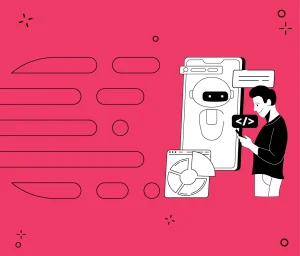Software support and maintenance is crucial to ensure optimal performance of applications and websites once they are in production. This phase is within the IT industry's best practices to ensure the quality and efficiency of the software. It includes everything from bug fixes to the implementation of new features.
What is done in software support and maintenance?
Support and maintenance teams carry out a series of actions to ensure the software continues to run smoothly and stays aligned with customer and end-user needs.
Subscribe to our newsletter
Immerse yourself in the world of technology with a human touch.
1. Bug Fixes
One of the main activities within support and maintenance is bug fixes. This process focuses on solving problems that may arise due to updates or bugs detected by users.
Sometimes, it requires the implementation of code improvements, the inclusion of new test cases, or access to the database to resolve reported incidents. To accomplish this task, it is ideal to have a part-time professional available, who is usually familiar with the project and/or has participated in its development. This person ensures that these issues are resolved effectively.
2. Implementation of new features
Another common situation at this phase is the need to add new functionality to the software. When a customer wants to expand the capabilities of the application, the development team needs to be reorganized and expanded.
This is because the support professional can't handle these tasks alone. At the same time, it is important to note that suggestions for these improvements or new features often come after the product is in production, as they are based on feedback from end users.

3. Management of Requests and Sprints
Customers are always encouraged to collect several requests and suggestions before returning to production, and once there, a new sprint is started. This is a period of about 15 days where a technical lead and QA evaluate the requests.
However, it is understood that some enhancements or new features require immediate attention. Therefore, sometimes teams or companies offer flexibility to find professionals who can resolve requests quickly and assign precise delivery dates.
4. Staging
Staging is a practice that allows you to incorporate improvements and new features before releasing a second version of the software. However, it is advisable not to make too many changes directly in production. This reduces the risk of operational errors and ensures a smooth transition.
At Crombie, we understand that support and maintenance are fundamental to the software lifecycle. That's why we are committed to providing a high-quality service that ensures the optimal and continuous operation of applications. In this way, we support the growth and satisfaction of our customers.
It’s the service that ensures software runs smoothly after implementation, including bug fixes, updates, and ongoing improvements.
Support addresses user incidents or immediate needs. Maintenance, on the other hand, involves preventive and evolutionary actions to improve, update, or adapt the software to new requirements.








0 comments
·
3 min Read